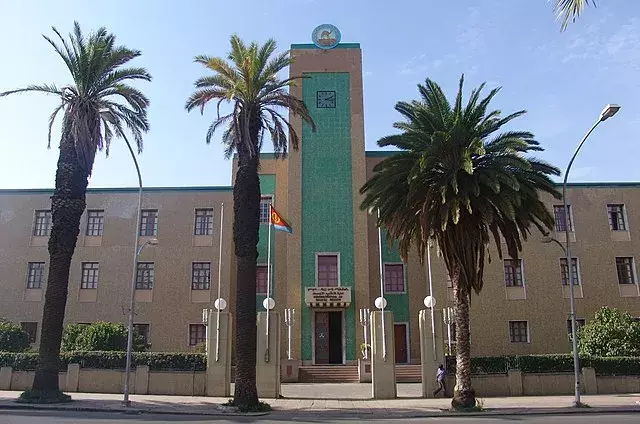Palace of Governor Ferdinando Martini

- The Palace of Governor Ferdinando Martini is one of the most historicallysignificant and architecturally stunning landmarks in Asmara, Eritrea. Built during the Italian colonial period in the early 20th century, the palace served as the residence of Ferdinando Martini, the first Governor of Eritrea under Italian rule. The structure reflects the grandeur and ambition of the Italian colonial administration, blending European neoclassical and Art Deco styles with influences from Eritrean architectural traditions. Standing as a symbol of colonial power and governance, the palace remains one of Asmara’s most impressive and well-preserved historical buildings.
- The architectural design of the Palace of Governor Ferdinando Martini showcases a mix of Italian elegance and Eritrean cultural elements. The exterior features ornate balconies, grand archways, and decorative columns, emphasizing the neoclassical influence popular in early 20th-century European buildings. The interior boasts high ceilings, intricate woodwork, and spacious halls, reflecting the luxurious lifestyle of the Italian colonial elite. Located in a prime area of Asmara, the palace offers panoramic views of the surrounding city and serves as a reminder of Asmara’s rich colonial past. Over the years, the building has been carefully maintained, preserving its historical and architectural significance.
- Beyond its architectural beauty, the Palace of Governor Ferdinando Martini played an essential role in Eritrea’s colonial and political history. As the residence of the Italian governor, it was a center for administrative decisions and strategic planning during Italy’s rule over Eritrea. The palace witnessed important political events, including colonial expansion policies, diplomatic meetings, and military strategies. Later, as Eritrea moved toward independence, the building continued to serve various governmental functions. Today, it remains a symbol of Eritrea’s colonial legacy, providing insight into the country's complex historical journey from colonization to sovereignty.
- For visitors and historians, the Palace of Governor Ferdinando Martini offers a fascinating glimpse into Asmara’s past. While access to the interior may be restricted, the building’s majestic façade, intricate architectural details, and historical significance make it a must-see landmark for anyone exploring the city. The palace stands as a testament to Asmara’s status as a UNESCO World Heritage Site, reflecting the fusion of African and European influences that define the city’s unique character. Whether viewed as a historical monument, an architectural masterpiece, or a symbol of Eritrea’s colonial past, the Palace of Governor Ferdinando Martini remains an integral part of Asmara’s cultural heritage.
